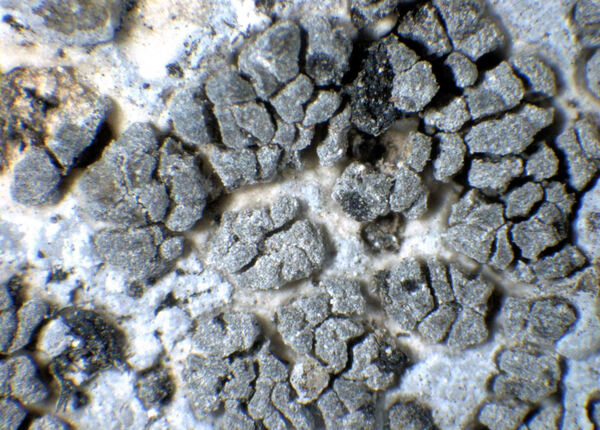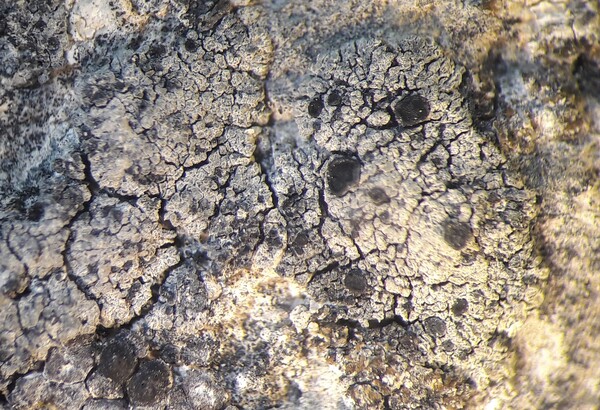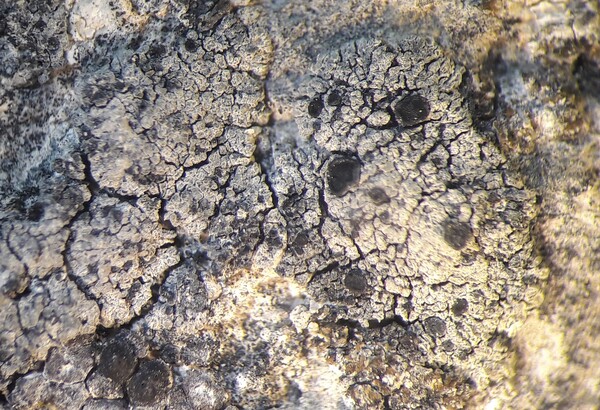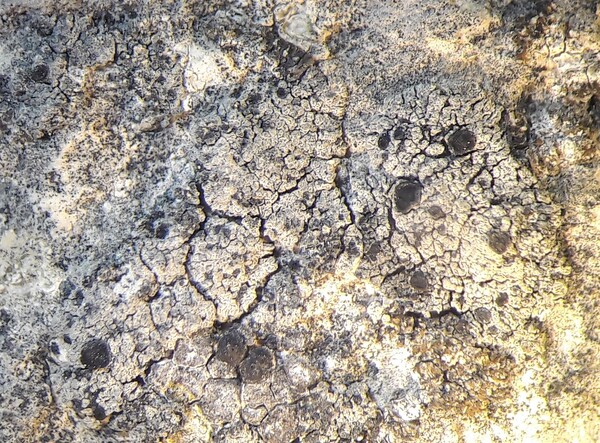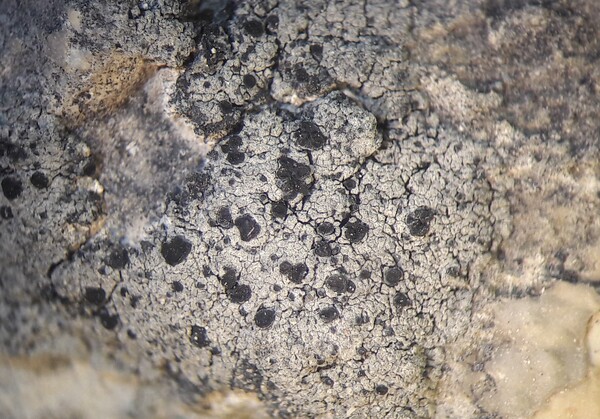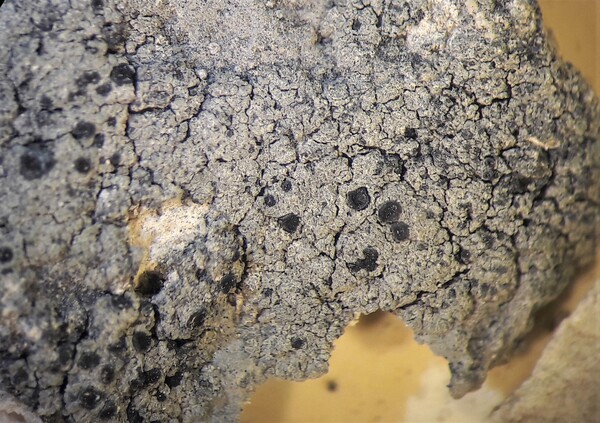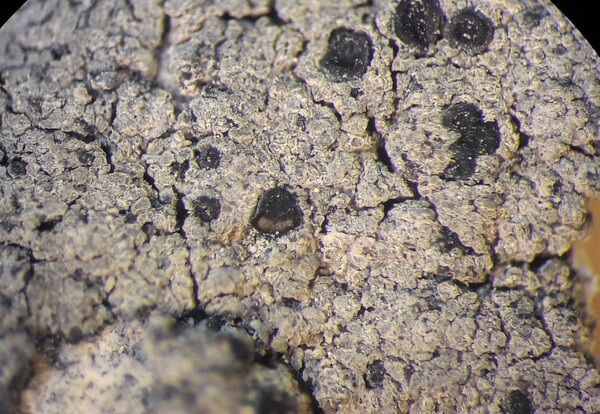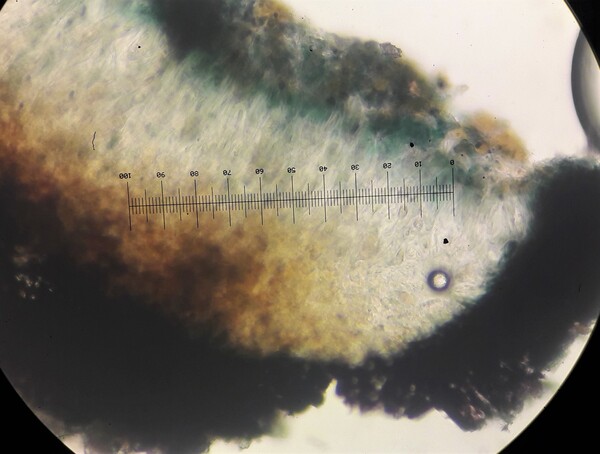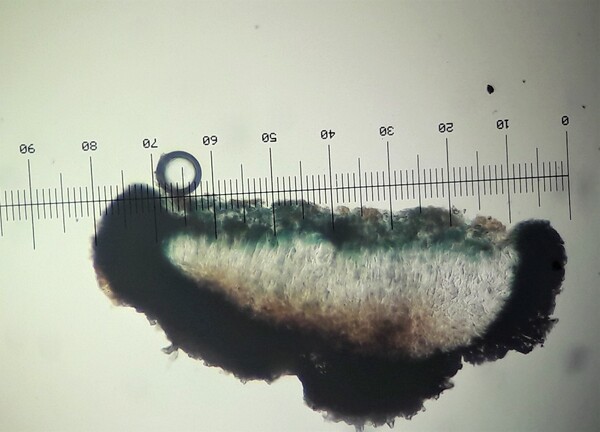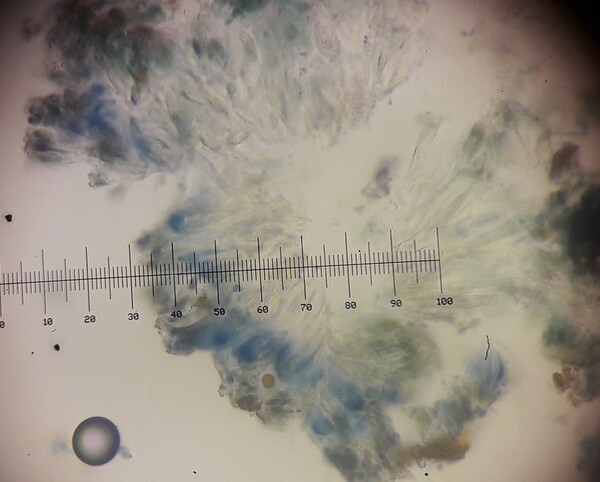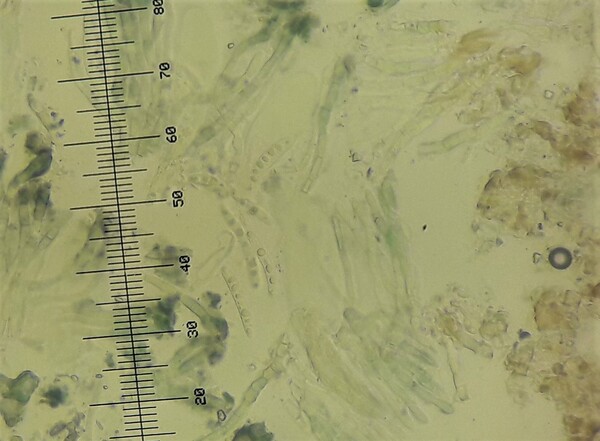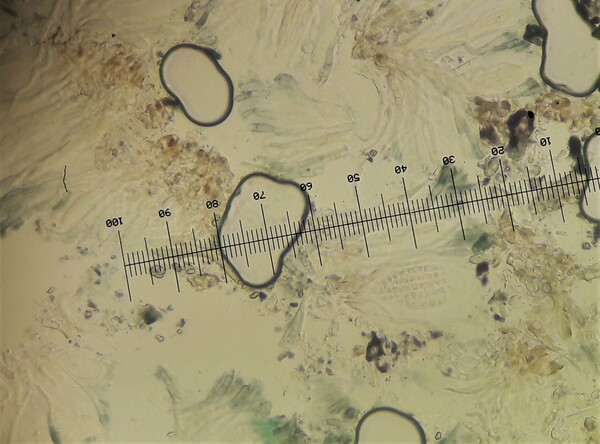Placynthium garovaglii (A. Massal.) Malme
Lich. Suec. Exs., fasc. 30: nr. 743, 1918. Basionym: Racoblenna garovaglii A. Massal. - Mem. Lichenogr.: 134, 1853.
Synonyms:
Distribution: N - VG (TSB 3277), Frl (TSB 1622), Ven (Lazzarin 2000b, Ravera & al. 2022), TAA (Czeika & Czeika 2007, as var. subtile), Lomb, Piem. C - Marc (Nimis & Tretiach 1999). S - Camp (Aprile & al. 2003b).
Description: Thallus crustose-placodioid, up to 1.5(-2) mm thick, paraplectenchymatous throughout, forming up to 15(-20) mm wide rosettes, black when dry, but densely white to bluish-grey pruinose, dull grey-brown when wet, usually without a distinct prothallus. Central parts consisting of strongly convex, erect, 0.1-0.2(-0.4) mm wide outgrowths which sometimes fall off leaving semi-circles of marginal lobes. Lobes contiguous, usually convex, simple or sparingly branched, usually 0.5-1(-2) mm long and wide, often rugose or striate, closely adhering to the substrate except at the ends. Apothecia rather common, biatorine, sessile, to 1 mm across, black. Hymenium colourless, I+ blue. Asci 8-spored, apically thickened, with an amyloid cap. Ascospores 3(-7)-septate, hyaline, elongate-fusiform, (20-)25-35(-50) x 3-5(-6) μm. Pycnidia to 250 μm diam, dark blue near the ostiole. Conidia bacilliform. (5-)7-9 x c. 1 μm, straight or slightly curved, Photobiont cyanobacterial, Scytonema-like. Spot tests: all negative. Chemistry: without lichen substances. Note: on steeply inclined, sunny surfaces of calcareous rocks with some water seepage; certainly more widespread in Southern Italy, but largely overlooked by earlier authors. The species name is often spelled garovaglioi, but the Latinised name of Santo Garovaglio (who wrote most of his works in Latin) was Garovaglius, whose genitive is garovaglii.
Growth form: Crustose
Substrata: rocks
Photobiont: cyanobacteria, filamentous (e.g. Nostoc, Scytonema)
Reproductive strategy: mainly sexual
On otherwise dry surfaces with short periods of water seepage after rain
Commonnes-rarity: (info)
Alpine belt: extremely rare
Subalpine belt: very rare
Oromediterranean belt: very rare
Montane belt: rather rare
Submediterranean belt: rare
Padanian area: absent
Humid submediterranean belt: rare
Humid mediterranean belt: very rare
Dry mediterranean belt: extremely rare
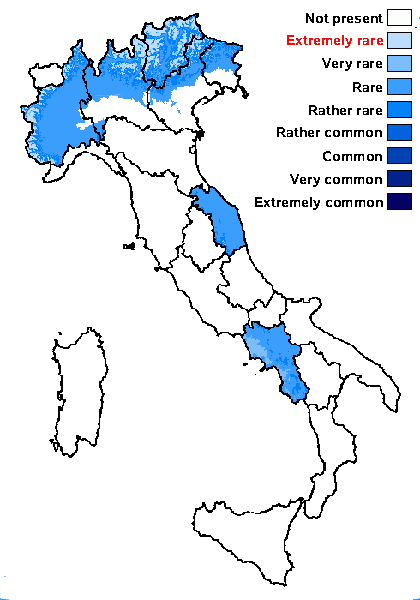
Predictive model
Herbarium samples
Growth form: Crustose
Substrata: rocks
Photobiont: cyanobacteria, filamentous (e.g. Nostoc, Scytonema)
Reproductive strategy: mainly sexual
On otherwise dry surfaces with short periods of water seepage after rain
Commonnes-rarity: (info)
Alpine belt: extremely rare
Subalpine belt: very rare
Oromediterranean belt: very rare
Montane belt: rather rare
Submediterranean belt: rare
Padanian area: absent
Humid submediterranean belt: rare
Humid mediterranean belt: very rare
Dry mediterranean belt: extremely rare

Predictive model
| Herbarium samples |
 Index Fungorum
Index Fungorum
 GBIF
GBIF
